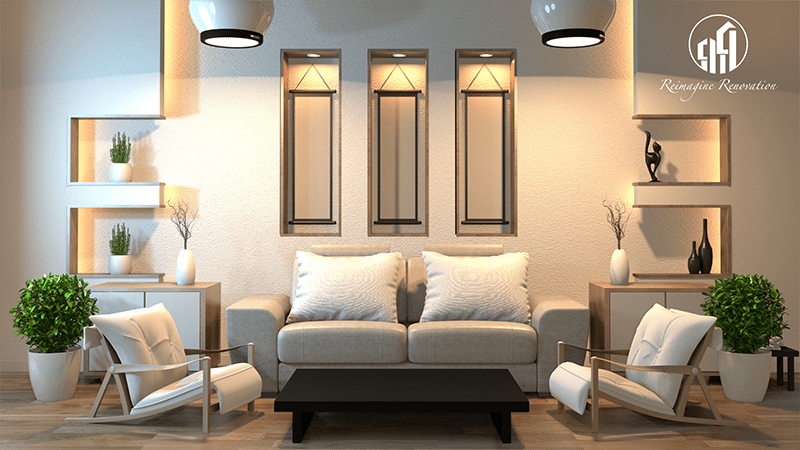Home interior design is a creative process that involves transforming an indoor space into a functional, safe, and aesthetically pleasing environment. It’s not just about making a home look good; it’s about ensuring it reflects the personality of the homeowners and serves their needs effectively.
Megan, the owner of Reimagine Renovation, has been redesigning and remodeling homes for 4 years. She loves to help clients create a 3D model of their space, complete with ideas for flooring, furniture, fixtures, colors, and all aspects of design.
The art of home interior design is built around seven key elements: space, line, form, light, color, texture, and pattern. Understanding these elements can help you create a balanced and harmonious living space.
1. Space: The Foundation of Home Interior Design
Space is the first and most fundamental element in interior design. It refers to the physical boundaries of a room and includes length, width, and height. Space can be divided into two categories: positive (filled with furniture or decor) and negative (empty areas). Effective interior design strikes a balance between these two types of spaces to avoid clutter or emptiness.
2. Line: Creating Harmony and Contrast
Lines define shapes and forms in your room. They guide the eye movement and can significantly influence the mood or feeling of a space. There are three types of lines in interior design: horizontal (tables, bed), vertical (windows, doors), and dynamic (staircases). Combining different types of lines creates harmony and contrast in your home interior design.
3. Form: Shaping Your Space
Form refers to the shape of objects within a room. It could be geometric (hard lines & square edges like furniture) or natural (organic forms like plants). Forms play an essential role in determining how comfortable we feel in a particular room – too many sharp edges may make us feel uneasy while rounded forms tend to be more relaxing.
4. Light: Illuminating Your Design
Light is another crucial element that brings life to your home’s interior design. Whether natural or artificial, light enhances colors, textures, and other elements in a room. It can also influence the mood and perceived size of a space. A well-lit room feels more welcoming and spacious.
5. Color: Setting the Mood
Color is a powerful design tool that can make rooms appear larger, smaller, brighter, or more tranquil. It sets the mood in a room and creates an emotional response from those who enter it. For instance, warm colors like reds, yellows, and oranges create an energizing effect while cool colors like blues and greens evoke calmness.
6. Texture: Adding Depth and Dimension
Texture refers to how surfaces feel or appear to feel. It adds depth and dimension to a room, making it visually interesting. There are two types of texture in interior design: visual (how things look) and actual (how things feel). Combining different textures – such as smooth silk cushions on a rough wooden bench – can add interest to your home interior design.
7. Pattern: Bringing Life to Your Design
Patterns add life and personality to your interior design by bringing together colors and shapes in a consistent, organized way. They can be found in fabrics, rugs, tiles, wallpapers, etc., adding visual interest to your space.
Effective home interior design isn’t just about aesthetics; it’s about creating spaces that are functional, comfortable, and reflective of our clients’ personalities. Let Reimagine Renovation help you apply these seven elements to transform your home into a beautifully balanced and inviting living space. Reach out to us today to schedule your free discovery call!

